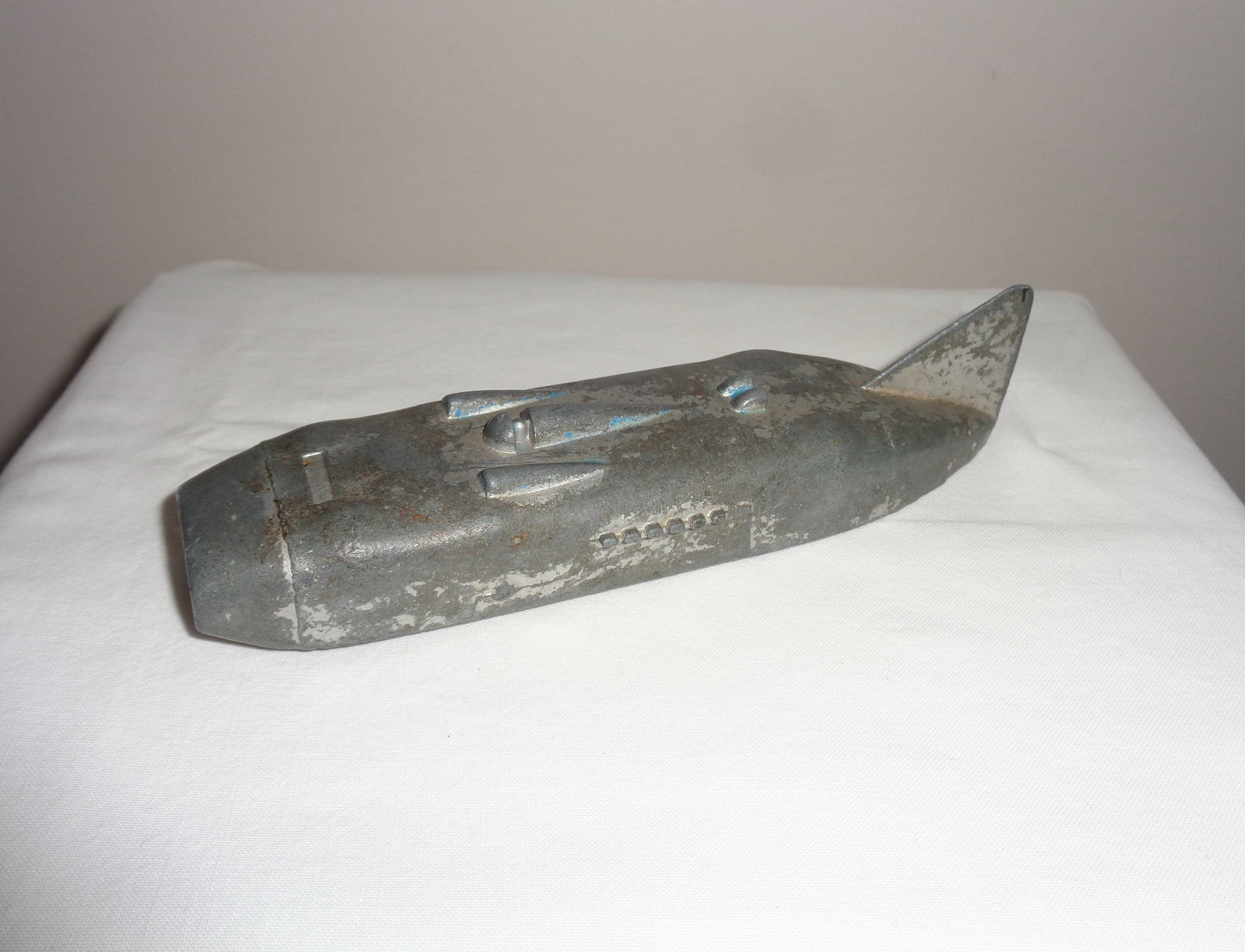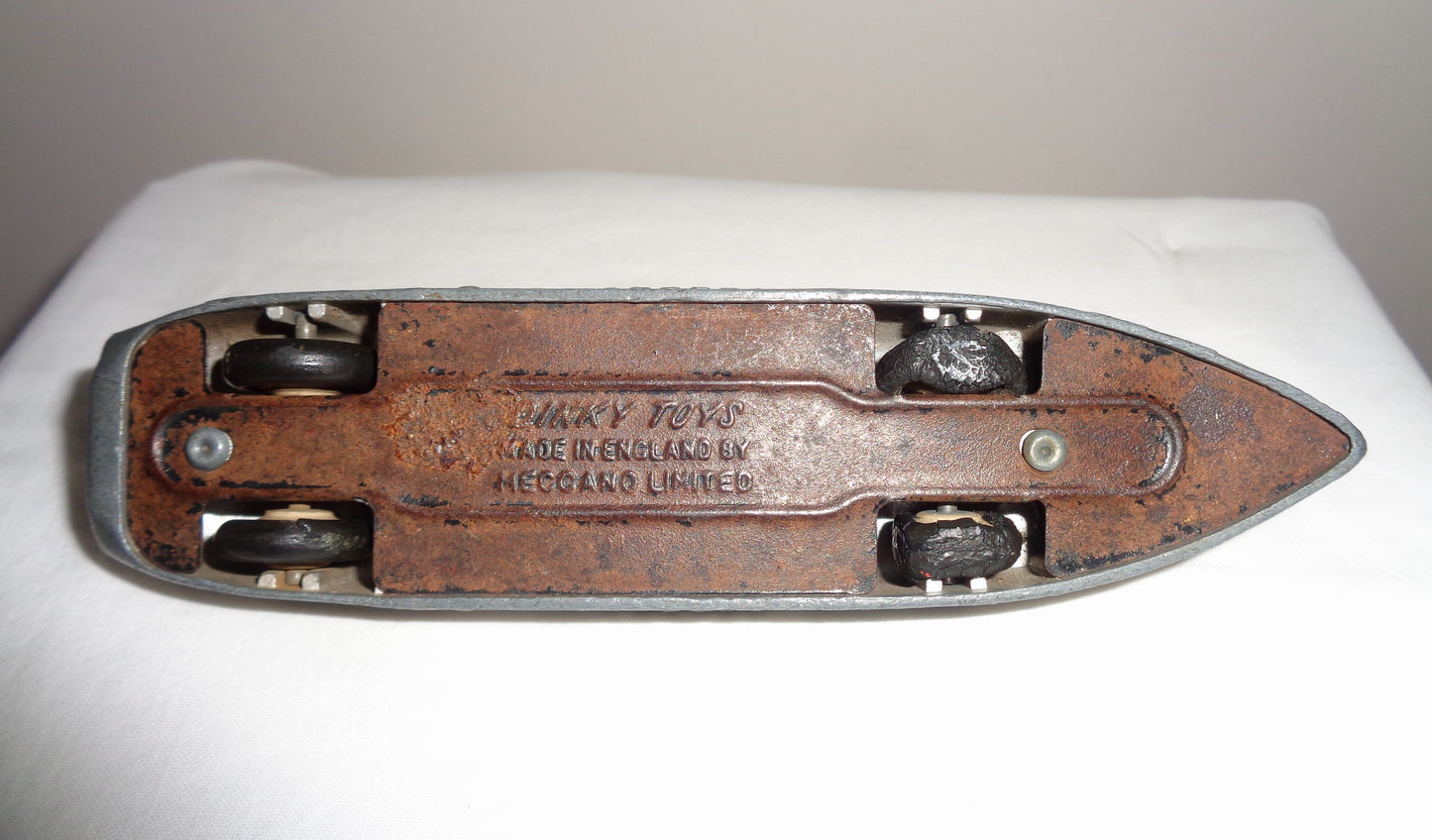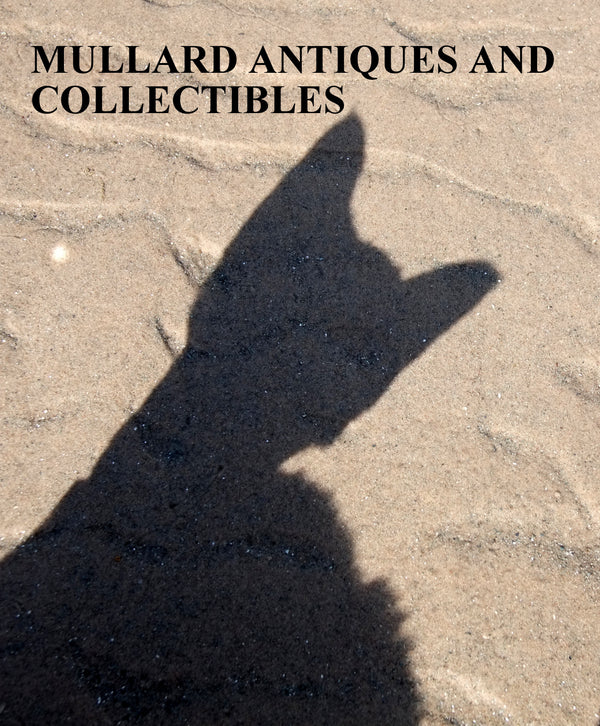1940s Meccano Dinky No.23S Thunderbolt Racing Car
1940s Meccano Dinky No.23S Thunderbolt Racing Car
Meccano Dinky
Low stock: 1 left
Couldn't load pickup availability
1940s Meccano Dinky No.23S Thunderbolt Racing Car
We have for sale an unboxed 1940s Meccano Dinky No.23S Thunderbolt Racing Car.
The car is in fair to poor condition, with most of the paint missing, as described below. It has black tyres and cream hubs; the two rear tyres have warped with age.
The markings on the base say: Dinky Toys, Made in England by Meccano Limited. The base has lost most of its coating and is rusty with age.
This car would have been mainly silver with blue details, (including the air intake and flash), and was built in the scale of 1:73. One of very few models built to that scale, which is why the driver's head looks so tiny! There are some flecks of blue and silver paint still evident.
This model dates to the early 1940s: there are several variants of the Dinky 'Thunderbolt' (23m, 23s, 222) produced from 1938- 1950's.
A good condition pre-WW2 Thunderbolt Dinky model can realise close to £200. This is available for just 1/10 of that at £20, and would be good as a starter collector piece or for restoration.
It was originally issued as a commemoration to the land speed record set by Captain G.E.T Eyston in his car 'Thunderbolt' in 1938.
Please click on the following link for more vintage toy cars.
Some Trivia For You About Thunderbolt
'Thunderbolt' on the Bonneville Salt Flats, Utah
- Captain G.E.T.Eyston set the land speed record in Thunderbolt on September 16th 1938.
- The record was set at the Bonneville Salt Flats: a densely packed salt pan in Tooele County, N.W Utah
- He achieved a speed of 357.53 mph!
- The car was built by Bean's (UK)
- Thunderbolt weighed 7 tons and was more than 30ft long.
- It was fitted with two 12-cylinder Rolls Royce engines (4500bhp) and a three-speed gear box.
- The car met an undignified end in a fire at the Centenary Exhibition in Wellington, New Zealand, 1939.
- The engines had already been removed. One is in the Science Museum, London. The second is at the Royal Air Force Museum, Hendon.
















